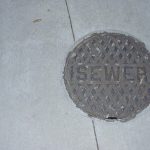Working as a less invasive and more cost-effective solution for repairing or replacing underground pipes, trenchless technology is no less than a revolution in the plumbing industry. Unlike conventional methods, trenchless techniques are linked with minimal disruption to the structure, reduced labor costs, and a faster repair process. Scroll down for a detailed guide exploring the various aspects of trenchless technology, its benefits, and the situations where it is most applicable to get a comprehensive understanding of this innovative approach.
What is Trenchless Technology?
Trenchless technology refers to methods of installing or repairing underground pipelines with minimal excavation. This innovative approach involves techniques such as pipe bursting, pipe relining, and directional boring, which allow for getting the task done without the need for extensive digging. These methods are particularly beneficial for urban areas with limited space and for properties with extensive landscaping that homeowners want to safeguard.
Key Techniques in Trenchless Technology
Below are some of the key techniques associated with trenchless technology :
Pipe Bursting
One of the substitution methods for replacing old, damaged, or rotten pipes is pipe bursting. It is a method where an existing pipe is smashed while simultaneously going through the pulling in of a new pipe into its place. A bursting head is inserted into the old pipe. The head bursts the old pipe as a new replacement pipe is pulled in behind it. This method will be efficient in replacing pipes that have been heavily damaged and collapsed, and it may work for various pipe materials incuding clay, concrete, and PVC.
Pipe Relining
Fundamentally, pipe relining, or cured-in-place pipe lining, involves substituting damaged pipe works by inserting a flexible liner coated with resin into the damaged pipe. Once in place, the liner is inflated and allowed to cure, forming a new pipe within the old one. It is ideal for leaky, cracked pipes and other minor damages, such as displaced joints. It is a versatile solution that suits pipes of different diameters and materials.
Directional Boring
Horizontal directional drilling (HDD), or simply directional boring, is a trenchless method to lay underground pipes without much trenching. Simply put, digging a pilot hole along a selected path where subsequent hole enlargement accommodates a new pipe. Directional boring is basically done with utility pipes and conduits where conventional excavation cannot be performed for fear that it might traverse over roads, rivers, or buildings.
Advantages of Trenchless Technology
Trenchless technology has numerous benefits in terms of the environment as well as the cost factor. Let’s take a look at some of its major advantages.
Minimal Property Disruption
One of the most significant benefits of trenchless technologies is the minimal amount of disruption it makes to your property. Conventional methods used to repair pipework almost always call for extensive digging, ruining all the lawns, driveways, and landscaping. Trenchless methods require minor access points, preserving the integrity of the property and minimizing the need for expensive restoration.
Cost-Effective
Although, the initial investment may be relatively higher, trenchless technology comes with more savings on a larger level. Reduced labor costs, minimal property damage, as well as faster completion times help in long-term cost savings for a project. Homeowners also avoid the cost implications of restoring damaged landscapes and driveways.
Faster Completion
Trenchless projects are generally done within shorter timespans than conventional pipe repair methods. This reduction in excavation work-combined with advanced technology-results in rapid installation and repair, which in turn, means less inconvenience for homeowners and they can return to their normal routines sooner.
Durability and Longevity
The fact that the materials used to make the pipes, liners, or any other components in case of trenchless technology are strong and corrosion-resistant makes the refurbished/replaced pipes much more robust and long-lasting. This means lesser repairs and peace of mind for the homeowner.
Reduced Carbon Footprint
In comparison to traditional methods that require substantial excavation, trenchless technology significantly reduces the carbon footprint. Reduced use of heavy machinery and less digging result in a lesser use of fuel which further leads to reduced emission of greenhouse gases. It surely is an environmentally friendly option for homeowners looking to do their part in reducing their environmental impacts.
Preservation of Natural Landscapes
Older repair techniques involve a great deal of digging-which also contributes to much of the permanent obstructions and damage to the natural landscapes in the yard, including trees, shrubs, and gardens. Trenchless technology calls for lesser excavation which helps preserve these natural features, thereby maintaining the aesthetic and ecological integrity of the property.
Water Conservation
Leaking and damaged pipes can lead to significant water wastage. By efficiently repairing these pipes, trenchless technology helps conserve water resources. This is particularly important in areas prone to drought or with limited water supply, contributing to overall water conservation efforts.
Is Trenchless Technology Right for Your Home?
Whether trenchless technology is suitable for your home or not calls for assessing the amount of the damage to your existing pipes. Minor cracks and leaks can generally be repaired using pipe relining. On the other hand, more extensive damage requires pipe bursting or directional boring.
Another major factor to consider is the material and age of your existing pipes. Trenchless technology is compatible with various pipe materials, including clay, concrete, PVC, and cast iron and works wonders for older pipes made from outdated materials. Local soil conditions also affect the feasibility of trenchless technology as highly compacted soil or the one which contains a lot of rocks may be challenging for certain trenchless methods.
Speaking with a professional plumbing service that specializes in trenchless technology is a must for making an informed decision. Experts can perform a thorough check of your plumbing system, further assessing the grevity of the damage, followed by recommending the most effective trenchless solution for your needs.
Future Trends in Trenchless Technology
Here are some major future trends that are going to make trenchless technology a lot more popular :
Advances in Materials and Techniques
Constant research and development in the field of trenchless technology has lead to major improvements in materials and techniques. New types of pipe liners and bursting heads are being crafted in order to make the trenchless methods more efficient and durable. These advancements will further reduce costs and broaden the range of applications for this technology.
Increased Adoption and Awareness
As more and more people become aware of the benefits of trenchless technology, its adoption is expected to increase. Education and awareness campaigns by plumbing professionals and industry organizations play a major role in the same.
Integration with Smart Home Technology
One of the most amazing developments on the charts is the integration of trenchless technology with smart home systems. Smart sensors and monitoring devices can be used to detect early signs of pipe damage, followed by alerting homeowners to potential issues before they become major problems. This proactive approach can help prevent costly repairs and increase the longevity of plumbing systems.
Common Misconceptions about Trenchless Technology
Let’s take a look at some common misconceptions concerning trenchless technology.
Cost Concerns
One common misconception is that trenchless technology is prohibitively expensive. While the upfront costs may be higher than traditional methods, the long-term savings in terms of reduced labor, minimal property damage, and extended pipe lifespan often outweigh the initial investment.
Limited Applications
Some homeowners believe that trenchless technology is only suitable for certain types of repairs. In reality, trenchless methods can address a wide range of issues, from minor leaks to complete pipe replacements. Consulting with a trenchless technology expert can provide clarity on the applicability of these methods for specific situations.
Quality and Durability
There may be concerns about the quality and durability of trenchless repairs. However, the materials used in trenchless technology, such as HDPE pipes and epoxy resin liners, are designed to be highly durable and long-lasting. These materials often outperform traditional pipe materials, providing reliable and long-term solutions.
Selecting a Trenchless Technology Service Provider
It is essential to consider the experience and expertise of the service provider before choosing the same. Look for providers with a proven track record of successful projects and positive customer reviews. Experienced professionals are more likely to deliver high-quality results and handle unexpected challenges effectively. Plus, licensing ensures that the provider meets industry standards and regulations, while certification indicates specialized training and expertise in trenchless methods. So, make sure to go for a properly licensed provider who possesses the certificate to work with trenchless technology.
Typically, a reputable service provider will conduct a thorough inspection and diagnosis of your plumbing system before recommending a solution. They employ advanced diagnostic tools, such as video camera inspections, to accurately assess the condition of your pipes and determine the most suitable trenchless method. It’s a good idea to request detailed cost estimates from multiple service providers to compare pricing and services. A comprehensive estimate should include all aspects of the project, such as labor, materials, and any additional costs related to property restoration.
DIY vs. Professional Trenchless Technology
While you may think of going for trenchless repairs all by yourself to save money, the approach may come with major risks. The technology calls for special equipment and expertise to avoid any unwanted damages and work up a proper installation. DIY attempts can lead to costly mistakes and may ultimately require professional intervention to correct.
Hiring a professional service provider offers several benefits, including access to advanced equipment, expertise in trenchless methods, and the assurance of quality workmanship. Professionals not only diagnose the issue better, but also execute repairs efficiently, while adhering to all safety standards and building codes to ensure long-term reliability and durability of the repairs.
Advanced Diagnostic Tools and Techniques
Professional trenchless service providers often use advanced diagnostic tools, such as video camera inspections, to assess the condition of underground pipes. These cameras are inserted into the pipes and provide real-time visual feedback, allowing technicians to identify cracks, blockages, and other issues with precision. This non-invasive method ensures accurate diagnosis without the need for extensive digging.
Hydro jetting is another advanced technique used by professionals to clean and clear pipes before conducting trenchless repairs. This method involves using high-pressure water jets to remove debris, grease, and tree roots from the pipes. Hydro jetting not only clears blockages but also prepares the pipes for relining or replacement, ensuring optimal results.
Choosing the Right Trenchless Method
Selecting the appropriate trenchless method depends on various factors, including the type and extent of damage, pipe material, soil conditions, and the specific needs of the homeowner. Professional consultation is crucial to determine the best approach for each unique situation. Here are some key factors to consider:
- Minor cracks and leaks can often be addressed with pipe relining, while severe damage or complete pipe failure may require pipe bursting.
- Different materials respond differently to trenchless methods. For example, clay pipes may benefit from pipe bursting, while PVC pipes might be more suitable for relining.
- The type of soil around the pipes can affect the feasibility of certain trenchless methods. Rocky or compacted soil may pose challenges for directional boring.
- Homeowners should consider their budget and desired timeline when choosing a trenchless method. While some methods may have higher upfront costs, they may offer long-term savings and faster completion times.
Maintenance and Prevention
Regular inspections are essential for maintaining the health of your plumbing system and preventing major issues. Professional plumbers can conduct routine inspections using video cameras and other diagnostic tools to identify potential problems early. Addressing minor issues before they escalate can save homeowners from costly repairs and inconvenience.
Homeowners can take preventive measures to prolong the life of their pipes and reduce the likelihood of damage. Some tips include:
- Do not flush items such as wipes, feminine hygiene products, or grease down the drains, as they can cause blockages and damage pipes.
- Be mindful of tree roots near your sewer lines. Tree roots can infiltrate pipes and cause significant damage. Consider planting trees away from your plumbing system or using root barriers.
- Periodically clean your drains using safe and effective methods, such as hydro jetting, to prevent buildup and blockages.
Conclusion
Trenchless technology is undoubtedly, a major advancement in the field of plumbing, providing homeowners with a less invasive, cost-effective, and efficient solution for repairing and replacing underground pipes. By understanding the various techniques and benefits associated with these methods, one can make informed decisions when facing plumbing issues. Whether it’s minimizing property disruption, reducing costs, or ensuring faster completion times, trenchless technology is a modern solution to age-old plumbing problems.
For more information on trenchless technology and to determine if it’s the right solution for your home, consult with a professional plumbing service that specializes in these innovative methods.





